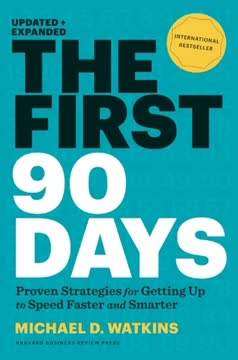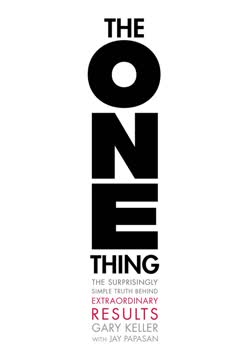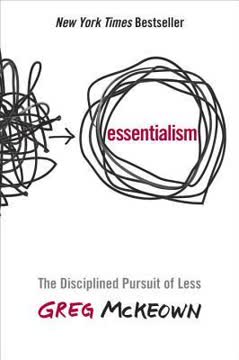Key Takeaways
1. Inbound Marketing: The New Paradigm for Customer Acquisition
People did not want to be interrupted by marketers or harassed by salespeople. They wanted to be helped.
Shift in consumer behavior. The traditional outbound marketing methods of interrupting potential customers with ads, cold calls, and unsolicited emails have become increasingly ineffective. Consumers now actively block these interruptions and turn to the internet for information and solutions.
Inbound marketing defined. Inbound marketing focuses on creating valuable content and experiences that attract potential customers to your business. By aligning your content with your customers' interests, you naturally draw inbound traffic that you can then convert, close, and delight over time.
Key components of inbound marketing:
- Creating helpful, relevant content
- Optimizing that content for search engines and social media
- Engaging with potential customers on their preferred platforms
- Nurturing leads through personalized follow-up
- Measuring and analyzing results for continuous improvement
2. Creating Remarkable Content: The Cornerstone of Inbound Success
The more remarkable the content and the more transparent you are about it, the more links to your site and the better it will rank in the search engines.
Content is king. Remarkable content is the fuel that powers inbound marketing. It attracts visitors, builds trust, and establishes your brand as an authority in your industry. The goal is to create content so valuable that people naturally want to share it and link to it.
Diversify your content. Experiment with different types of content to see what resonates best with your audience:
- Blog posts
- Whitepapers and ebooks
- Videos and webinars
- Infographics and visual content
- Podcasts
- Case studies and customer stories
Content creation tips:
- Focus on solving your customers' problems
- Use data and research to back up your points
- Tell compelling stories
- Make your content easy to scan and digest
- Include clear calls-to-action
3. SEO Mastery: Getting Found in Google's Organic Results
The best way to rank well in the Google search results is to create content that is rank-worthy.
Understanding Google's algorithm. Google ranks pages based on two primary factors: relevance and authority. Relevance is determined by how well your content matches the search query, while authority is measured by the number and quality of other websites linking to your content.
On-page SEO essentials:
- Use relevant keywords in your page titles, headers, and content
- Create descriptive, keyword-rich URLs
- Optimize your meta descriptions for click-throughs
- Use internal linking to connect related content
- Ensure your site is mobile-friendly and loads quickly
Off-page SEO strategies:
- Create link-worthy content that others want to share
- Guest post on reputable industry websites
- Engage in online communities and forums
- Leverage social media to amplify your content
- Build relationships with influencers in your industry
4. Leveraging Social Media: Building Brand Presence and Engagement
Social media is about being social and building genuine relationships for mutual gain with other people, not automated software systems.
Choose the right platforms. Focus on the social media channels where your target audience is most active. Each platform has its own strengths and best practices:
- Facebook: Build community and share diverse content
- Twitter: Engage in real-time conversations and share quick updates
- LinkedIn: Network with professionals and share industry insights
- Instagram: Showcase visual content and behind-the-scenes glimpses
- YouTube: Host video content and tutorials
Social media best practices:
- Be authentic and humanize your brand
- Consistently share valuable content
- Engage with your followers and respond to comments
- Use hashtags strategically to increase visibility
- Analyze your performance and adjust your strategy accordingly
5. Converting Visitors into Leads: The Art of Compelling Calls-to-Action
The difference between a weak call-to-action (e.g., a Contact Us page with an e-mail address on it) and a compelling one can mean the difference between a half a percent visitor-to-lead conversion rate and a 5 percent visitor-to-lead conversion rate.
VEPA framework for effective CTAs:
- Valuable: Offer something worth the visitor's time and information
- Easy to use: Make the action simple and clear
- Prominent: Place CTAs where they're easily visible
- Action-oriented: Use strong verbs that encourage immediate action
Optimize your landing pages:
- Match the content to your CTA
- Remove distracting navigation elements
- Use compelling headlines and subheadings
- Include social proof (testimonials, case studies)
- Keep forms short and only ask for essential information
Test and iterate. Continuously experiment with different CTA designs, copy, and placements to improve your conversion rates over time.
6. Nurturing Leads into Customers: The Power of Personalized Follow-Up
The idea behind lead nurturing is to maintain ongoing communication and dialog with these leads so that when they're ready to buy, your product is at the top of their minds.
Segment your leads. Group your leads based on factors like:
- Source of lead (e.g., specific content offer, social media platform)
- Industry or company size
- Stage in the buying process
- Specific interests or pain points
Create targeted nurturing campaigns:
- Develop a series of personalized emails or content offers
- Provide value at each touch point, not just sales pitches
- Use marketing automation to deliver the right content at the right time
- Gradually increase the sales focus as leads show more interest
Multi-channel nurturing. Don't rely solely on email. Incorporate other channels like:
- Retargeting ads
- Social media engagement
- Personalized website experiences
- Direct mail for high-value leads
7. Measuring Success: Analytics and Continuous Improvement in Inbound Marketing
What gets measured gets done.
Key metrics to track:
- Website traffic (overall and by source)
- Conversion rates at each stage of the funnel
- Lead quality and sales readiness
- Customer acquisition cost (CAC)
- Customer lifetime value (CLV)
- Return on investment (ROI) for specific campaigns
Tools for measurement:
- Google Analytics for website performance
- CRM software for lead and customer tracking
- Social media analytics tools
- Marketing automation platforms for campaign performance
Data-driven decision making:
- Regularly review your metrics and identify trends
- A/B test different elements of your inbound strategy
- Set SMART goals (Specific, Measurable, Achievable, Relevant, Time-bound)
- Use data to allocate resources to the most effective channels and tactics
8. The DARC Framework: Hiring and Developing Inbound Marketing Talent
In the inbound marketing era, it's important that you hire Digital Citizens, not Digital Tourists.
DARC framework explained:
- Digital Citizens: Hire people who are naturally comfortable and active online
- Analytical Chops: Look for candidates who can interpret data and derive insights
- Reach: Value individuals with established online networks and influence
- Content Creators: Prioritize those who can produce engaging, high-quality content
Developing existing talent:
- Provide ongoing training in inbound marketing best practices
- Encourage experimentation and learning from failures
- Reward innovation and creative thinking
- Foster a culture of continuous improvement
Measuring marketing team performance:
- Track individual contributions to key metrics
- Evaluate growth in personal online reach and influence
- Assess quality and quantity of content produced
- Measure ability to adapt to new platforms and technologies
Last updated:
FAQ
What's "Inbound Marketing, Revised and Updated" about?
- Focus on Inbound Marketing: The book by Brian Halligan and Dharmesh Shah is about the shift from traditional outbound marketing to inbound marketing, which focuses on attracting customers through valuable content and interactions.
- Comprehensive Guide: It provides a detailed guide on how to attract, engage, and delight customers online using various inbound marketing strategies.
- Practical Examples: The book includes real-world examples and case studies, such as Barack Obama's presidential campaign and companies like Whole Foods and Zappos, to illustrate successful inbound marketing strategies.
Why should I read "Inbound Marketing, Revised and Updated"?
- Stay Relevant: The book helps marketers adapt to the changing landscape where traditional marketing methods are becoming less effective.
- Learn Proven Strategies: It offers proven strategies and tactics for attracting and converting customers online, which are essential for modern businesses.
- Actionable Insights: Readers gain actionable insights and practical advice that can be implemented immediately to improve their marketing efforts.
What are the key takeaways of "Inbound Marketing, Revised and Updated"?
- Content is King: Creating remarkable content is crucial for attracting links, improving search engine rankings, and engaging with audiences.
- SEO and Social Media: The book emphasizes the importance of search engine optimization and social media in getting found by prospects.
- Conversion Focus: It highlights the need to convert website visitors into leads and customers through effective calls-to-action and landing pages.
How does "Inbound Marketing, Revised and Updated" define inbound marketing?
- Customer-Centric Approach: Inbound marketing is about pulling people in by sharing relevant information and creating useful content, rather than interrupting them with ads.
- Engagement and Delight: It focuses on engaging and delighting customers through meaningful interactions and building long-term relationships.
- Digital Tools and Strategies: The book outlines the use of digital tools and strategies to attract, convert, and retain customers.
What are the best quotes from "Inbound Marketing, Revised and Updated" and what do they mean?
- "You gotta give to get": This quote emphasizes the importance of providing valuable content to attract and engage customers.
- "Inbound marketing is fun, and with it comes a more rewarding way to live": It highlights the enjoyable and fulfilling nature of inbound marketing compared to traditional methods.
- "The outbound marketing era is over": This statement underscores the book's central theme that traditional marketing methods are becoming obsolete.
How does "Inbound Marketing, Revised and Updated" suggest creating remarkable content?
- Variety of Formats: The book suggests using different types of content, such as blog articles, videos, webinars, and infographics, to engage audiences.
- Focus on Value: Content should be valuable and relevant to the target audience, prompting them to share and link back to it.
- Continuous Creation: Building a content machine involves consistently producing and optimizing content to maintain engagement and drive traffic.
What is the DARC framework in "Inbound Marketing, Revised and Updated"?
- Digital Citizens: Hire people who are comfortable and active on the web, as they are more likely to understand and leverage digital marketing tools.
- Analytical Skills: Look for individuals with strong analytical skills to measure and optimize marketing efforts effectively.
- Web Reach: Employees should have a significant online presence and network to help expand the company's reach.
- Content Creators: Hire individuals who can create remarkable content that attracts and engages audiences.
How does "Inbound Marketing, Revised and Updated" address SEO?
- On-Page SEO: The book covers optimizing page titles, meta descriptions, and URLs to improve search engine rankings.
- Off-Page SEO: It emphasizes the importance of inbound links from authoritative sites to boost a website's authority and visibility.
- Keyword Strategy: Selecting the right keywords based on relevance, search volume, and competition is crucial for effective SEO.
What role does social media play in "Inbound Marketing, Revised and Updated"?
- Engagement Platform: Social media is a key platform for engaging with customers and building relationships.
- Content Distribution: It serves as a channel for distributing content and driving traffic back to the website.
- Brand Visibility: Social media helps increase brand visibility and reach a wider audience through shares and interactions.
How does "Inbound Marketing, Revised and Updated" suggest converting visitors into leads?
- Compelling Calls-to-Action: Use clear and valuable calls-to-action to guide visitors toward taking the desired action.
- Effective Landing Pages: Design landing pages that match the content of the call-to-action and focus on converting visitors.
- Lead Nurturing: Implement lead nurturing strategies to maintain engagement with prospects who are not yet ready to buy.
What are some real-world examples used in "Inbound Marketing, Revised and Updated"?
- Barack Obama's Campaign: The book discusses how Obama's campaign effectively used inbound marketing to engage voters and raise funds.
- Whole Foods Market: It highlights Whole Foods' use of a blog to connect with customers and share valuable content.
- Zappos: The book describes how Zappos leverages SEO and social media to attract and convert customers.
How does "Inbound Marketing, Revised and Updated" suggest measuring marketing success?
- Funnel Metrics: Track the size and conversion rates at each stage of the marketing funnel to assess effectiveness.
- Campaign Yield: Measure the return on investment for each marketing channel to determine which are most productive.
- Continuous Improvement: Use data and analytics to make informed decisions and continuously improve marketing strategies.
Review Summary
Inbound Marketing receives mixed reviews, with some praising its comprehensive introduction to digital marketing strategies and others finding it outdated. Many readers appreciate the practical advice on SEO, social media, and content creation, particularly for beginners. However, experienced marketers may find the content basic and commonplace. The book's age is a significant factor, with some information becoming obsolete due to rapidly changing digital landscapes. Despite this, many still consider it a valuable resource for understanding the fundamentals of online marketing and attracting customers through content-driven strategies.
Similar Books










Download PDF
Download EPUB
.epub digital book format is ideal for reading ebooks on phones, tablets, and e-readers.




